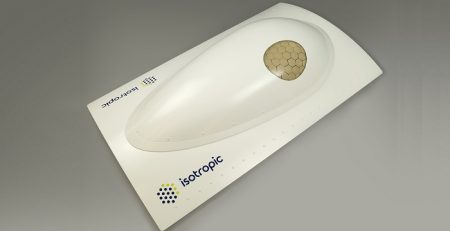What Techniques Can Mastering a Spectrum Analyzer Unlock for You?
In the realm of signal analysis, mastering a spectrum analyzer can unveil a multitude of technical proficiencies that enhance communication networks, electronic products, and research applications. When you become proficient with spectrum analyzers, you can gain deeper insights into signal behavior and characteristics that are crucial for optimizing performance.
 Exploring the Basics of Spectrum Analysis
Exploring the Basics of Spectrum Analysis
Understanding Spectrum Analyzers
A spectrum analyzer is a measurement tool used to analyze the frequency spectrum of electronic signals. By displaying signal strength as it varies with frequency, this tool provides critical insight into the operation of various systems. Spectrum analyzers are instrumental in diagnosing issues and ensuring that devices operate within designated frequency bands. This capability allows professionals to effectively troubleshoot, design, and optimize applications across telecommunications, broadcasting, and many other fields.
RF Echo‘s offerings include advanced spectrum analyzers that embody cutting-edge technology designed for detailed frequency analysis. Their devices facilitate precision measurement while enabling you to visualize complex signal patterns. Built to leverage the latest in signal processing algorithms, RF Echo products cater to both research and commercial needs, ensuring you can work with a system that delivers accurate and reliable results.
How to Read a Spectrum Analyzer
Reading a spectrum analyzer involves interpreting the displayed waveform and understanding its implications for the signal being analyzed. The typical display shows frequency on the X-axis and amplitude on the Y-axis. Key aspects include recognizing peak signal strengths and the overall spectral shape.
Essential Parameters and Their Interpretation
A spectrum analyzer provides various essential parameters that are fundamental to assessing signal integrity. Key parameters include frequency span, resolution bandwidth, and video bandwidth. The frequency span helps determine the range of frequencies monitored, while resolution bandwidth affects the ability to distinguish between near-frequency signals. Amplitude measurements give insight into signal strength, whereas the noise floor identifies the minimum detectable signal level. By analyzing these parameters, you can evaluate the performance and behavior of signals within a given spectrum.
Common Features of a Spectrum Analyzer
Many spectrum analyzers, including those manufactured by RF Echo, come equipped with a variety of features that enhance your analysis capabilities. These may include tracking generators, markers, and advanced triggering options. The tracking generator allows for automatic calibration and simplified measurements, while markers visually highlight specific frequencies of interest. Advanced triggering enhances your ability to analyze transient signals. Familiarity with these features can significantly improve your ability to make accurate assessments, optimize signal performance, and refine system designs.
Advanced Techniques in Spectrum Analysis
As you gain experience with spectrum analyzers, you may explore advanced techniques that can uncover deeper insights into signal characteristics and system performance. These techniques include the identification of signal components, harmonic distortion measurement, and noise figure analysis.
Identifying Signal Components and Interference
One of the key functions of a spectrum analyzer is the identification of various signal components and potential interference. This process involves analyzing the spectrum to discover undesired signals that can interfere with the primary signal of interest. By pinpointing these unwanted components, you can implement strategies for interference mitigation, enhancing signal clarity and overall system performance. Using RF Echo’s spectrum analyzers can streamline this process, with user-friendly interfaces facilitating efficient signal analysis.
Harmonic Distortion Measurement
Measuring harmonic distortion is integral for evaluating signal quality and integrity. Harmonic distortion refers to the unwanted frequencies generated at integer multiples of the fundamental frequency. Excessive harmonic distortion can degrade performance and lead to regulatory compliance issues. Spectrum analyzers can quantify the levels of harmonic distortion, allowing for corrective measures to be put in place. RF Echo’s products enable an accurate, comprehensive measurement of harmonic distortion, providing you with clarity and assurance of optimal device performance.
Noise Figure Analysis and Optimization
Noise figure analysis assesses the signal-to-noise ratio (SNR) of an amplifier or receiver system, impacting overall communication system quality. A well-calibrated spectrum analyzer allows you to measure and optimize the noise figure efficiently. By understanding and optimizing the noise figure, you can improve transmission performance, reduce error rates, and ensure reliable communication. RF Echo’s spectrum analyzers offer features designed to facilitate noise figure testing and optimization, making them indispensable tools in modern telecommunications.
Effective application of a spectrum analyzer employs technical proficiency and a solid understanding of signal behavior. As you master these tools and techniques, you unlock new capabilities for innovation in technology and signal processing, paving the way for enhanced performance across various applications.
 Practical Applications of Spectrum Analyzers
Practical Applications of Spectrum Analyzers
Harnessing the power of spectrum analyzers is essential in various fields, leading to enhanced performance, efficiency, and reliability in systems. The versatility of these tools enables you to explore numerous applications, primarily in communication systems, RF component development, and manufacturing.
Communication Systems Testing and Troubleshooting
In the dynamic landscape of communication systems, the role of spectrum analyzers is paramount. They allow for comprehensive testing and troubleshooting of both analog and digital communication pathways. When you monitor signal behavior, you can detect anomalies such as spurious emissions, frequency drift, and unwanted modulation, which can hinder system performance. These insights lead to swift debugging and resolution of issues, ensuring that communication systems operate seamlessly and efficiently.
Moreover, through regular usage of a spectrum analyzer, you can verify compliance with regulatory standards governing electromagnetic emissions. This is critical in sectors like broadcasting and telecommunications, where adherence to frequency allocations is mandatory. The effective analysis of the signal can result in improved signal quality and enhanced user experiences. RF Echo’s spectrum analyzers offer advanced capabilities, including real-time analysis and deep-dive diagnostics, facilitating thorough examinations of communication systems’ health and stability.
RF Component Development and Manufacturing with RF Echo Products
Spectrum analyzers play a critical role not only in testing existing systems but also in the development and manufacturing of RF components. By providing comprehensive analysis during the design phase, they allow engineers to innovate and improve upon existing technologies. You can identify essential parameters such as phase noise and third-order intermodulation distortion, which are vital for ensuring RF components meet performance criteria.
RF Echo’s innovative spectrum analyzers support this development process with tools tailored specifically for RF component characterization. With features such as built-in tracking generators and high-resolution displays, RF Echo products simplify the tasks of design validation and optimization. Designing high-performance RF components hinges on understanding how they behave under various conditions, and RF Echo’s solutions provide the insights necessary for that understanding.
Specific Use Cases in RF Echo’s Portfolio
Within RF Echo’s portfolio, specific use cases highlight the practical benefits of their spectrum analyzers. For instance, engineers can utilize their products to precisely measure signal levels in microwave and millimeter-wave systems. With performance capabilities extending up to 32,000 MHz, RF Echo’s spectrum analyzers can tackle diverse applications ranging from satellite communication to advanced radar systems.
On another front, the development of wireless technologies, such as 5G, benefits significantly from spectrum analysis. RF Echo products allow developers to analyze how multi-band signals interact, assessing performance parameters to ensure robust and reliable connections in densely populated frequency environments.
Enhancing Accuracy and Precision in Measurements
The accuracy and precision of measurements obtained through spectrum analyzers are pivotal to effective signal analysis. Various techniques play a significant role in achieving this level of measurement.
Calibration Techniques for Spectrum Analyzers
Calibrating your spectrum analyzer is crucial to obtain precise and reliable measurements. Calibration ensures that your tool is correctly interpreting the amplitude and frequency of the signals it analyzes. Regular calibration against known standards helps eliminate potential discrepancies that may arise due to temperature fluctuations or component aging.
Additionally, RF Echo provides detailed calibration documentation and protocols, ensuring you maintain the integrity of your measurements. Whether you need to calibrate for amplitude accuracy or frequency response, utilizing RF Echo’s guidance enables sustained tool reliability, enhancing measurement fidelity. Errors in measurements can lead to suboptimal system performance, making calibration an indispensable aspect of spectrum analyzer usage.
Leveraging Software Tools for Data Analysis
The integration of software tools alongside spectrum analyzers offers a substantial enhancement to measurement accuracy and data processing. Advanced software accompanies RF Echo’s spectrum analyzers, providing capabilities for real-time data processing and analysis. You can generate visually rich reports, making it easier to interpret complex data sets and share findings with stakeholders.
Furthermore, software tools enable statistical analysis and visualization techniques that enhance your understanding of signal performance over time. By leveraging these tools, you can establish baselines, track performance trends, and identify issues before they escalate into significant concerns. RF Echo’s software ecosystem complements its hardware offerings, creating a powerful, comprehensive solution for your signal analysis needs.
In conclusion, possessing the knowledge and skills to effectively utilize a spectrum analyzer unlocks a myriad of opportunities in professional environments. By focusing on practical applications and mastering advanced techniques, you can elevate your work in communication systems and RF component manufacturing. The combination of RF Echo’s innovative products and your expertise fosters a pathway to enhanced performance and consistent reliability across various signal analysis applications.


 Exploring the Basics of Spectrum Analysis
Exploring the Basics of Spectrum Analysis Practical Applications of Spectrum Analyzers
Practical Applications of Spectrum Analyzers




